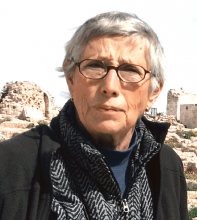You are here
Sides in Syria must stop vying for advantage
Dec 23,2015 - Last updated at Dec 26,2015
Russia and Iran continue to be the external mainstays of the Syrian government and in spite of Western reports to the contrary, can be expected to continue their backing.
Both Moscow and Tehran have reasserted regional influence thanks to the conflict in Syria and Iraq.
Before the war, Russia and Iran had pulled back: Russia because it was busy elsewhere and Iran because it remained seriously sanctioned by the West and unwilling to risk its displeasure before an agreement over Tehran’s nuclear programme was concluded.
The influx last spring of weapons to taqfiri groups in Syria, at a time government forces were advancing, and the conclusion of the Iranian nuclear deal prompted Russia to act and Iran to step up its support.
Russia belatedly deployed aircraft to provide cover for Syria’s beleaguered forces and Iran extended financial aid and increased the level of Revolutionary Guard forces involved in the Syrian war.
Consequently, Russia and Iran are now “indispensable” actors on the regional stage: they are not only on the ground in Syria, but also taking part in talks on ending the war and forging that country’s future.
They are battling Daesh and other taqfiri groups with the intention of driving their fighters from Syria — and ultimately Iraq — and freeing major urban centres that have fallen to these elements.
Without Russia and Iran, there would have been no roadmap agreed in Vienna in mid-November nor UN Security Council resolution reinforcing the roadmap, which calls for talks between the Syrian government and an opposition delegation by January 1, ceasefires between government forces and selected anti-government fighters, a transitional or national unity authority by mid-year and elections under a new constitution within 18 months.
At the insistence of Russia and Iran, no mention was made of what to do about President Bashar Assad, a main issue at contention.
The government, the Russians and the Iranians insist he must stay through the transition, while the opposition and its backers argue he must go before the transition.
The deadlock over Assad prompted exasperated UN Secretary General Ban Ki-moon to say that the fate of Syria must not be decided by one man.
A Beirut-based politico-military analyst said the regional and international powers involved in the Syrian conflict have not yet reached the stage of making the sort of concessions necessary for a settlement.
They are still playing games while Syrians fight and die, the economy is worn down by a war of attrition, and the country and its infrastructure are destroyed.
Meanwhile, government forces are making modest progress on the battlefield.
The December 9 agreement with various armed groups to cease fire and evacuate Al Waer, the final district adjacent to Homs under insurgent control, has given Damascus a boost and if the fighters complete their withdrawal by February, full control of Homs, Syria’s third city.
The strategic road to Homs is also firmly under army control.
The trip from Damascus to Homs takes only two hours these days.
Government forces, given Russian air cover, have also fended off attacks from the insurgent coalition based in the northwest province of Idlib and taken over villages east of Aleppo, in preparation for the expected battle for insurgent-held quarters of that city.
Syrian Kurdish militias that cooperate with government troops in Hassakeh, have seized a broad strip of territory along the Turkish border. The situation in the south has, for the time being, stabilised.
Daesh has, apparently, been forced onto the defensive in both Syria and Iraq. The cult’s military positions, vehicles, oil refineries and tankers, and cross-border supply routes have been destroyed in attacks stepped up since the Russian airforce entered the war, on September 30.
Daesh’s manpower and materiel resources are being depleted in Syria and Iraq, and the group’s attack on Paris that killed 130 civilians on December 13 has been a wake-up call for the West which had, until then, considered the cult a minor threat.
However, the number of foreign fighters, the backbone of Daesh, has not diminished.
According to the US-based Soufan Group, foreign fighters have doubled to 27,000-31,000 since 2014. Soufan Group also reports that 20-30 per cent return to their homelands, where at least some dedicated operatives could mount attacks similar to the onslaught in Paris.
Soufan Group contends that the flow from Europe of foreign fighters has doubled, in particular, while it has “remained relatively flat [from] North America”.
Fighters from Russia and Central Asia have grown 300 per cent. This latter figure suggests that Russia has a serious domestic motive for joining battle in Syria.
Arab contingents still outnumber Western recruits.
The constant growth of Daesh recruits should, therefore, motivate the powers that are still playing games over Assad’s position
to end their jockeying for advantage and press the parties to impose ceasefires on all but the Daesh and taqfiri fronts, and negotiate a political settlement.
Since Iran and Russia are deeply involved in the conflict on the side of the government, they should have enough leverage to ensure that it will attend negotiations.
And, since the West risks fresh attacks by Daesh elements, it should agree to compromise over Assad, allowing him to stay for some time, press for ceasefires
across Syria, and ensure that the transitional or national unity authority that emerges has respectability, credibility and the ability to govern.
The two sides must act soon and stop vying for advantage. Syrians are dying every day.
The world cannot afford to wait around for the US to conduct another “democratic experiment” in Syria, like the one that transformed Iraq into a failed state and created the conditions for the rise of Daesh, Al Qaeda and the taqfiris.
One debacle at the heartland of the eastern Arab world is enough.













